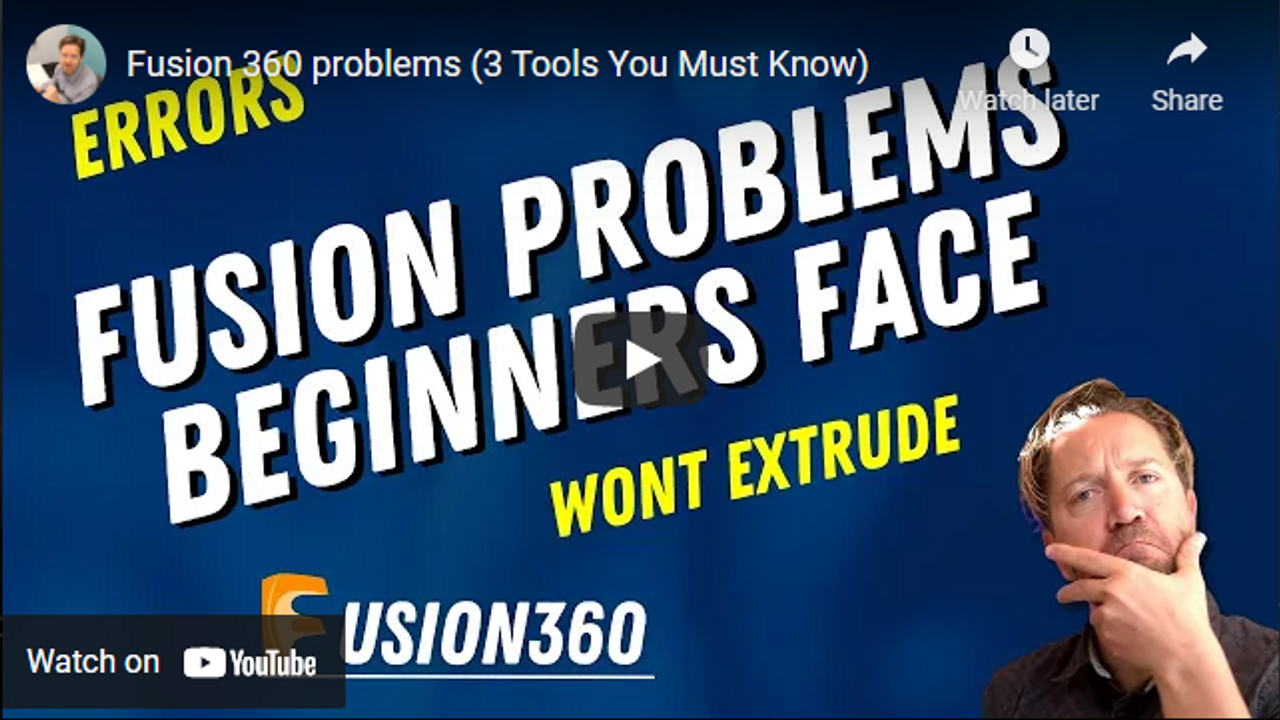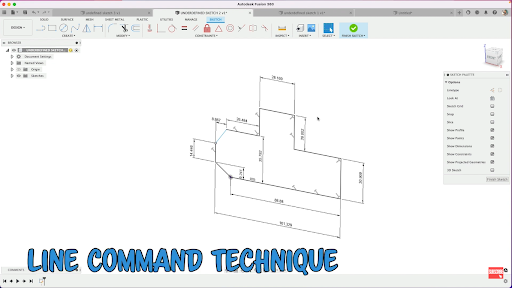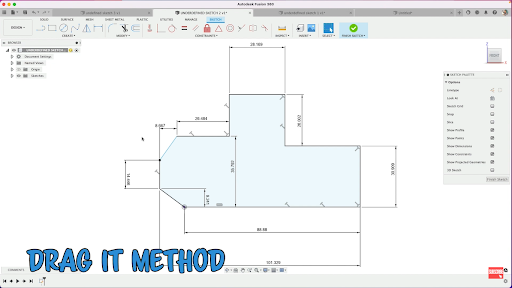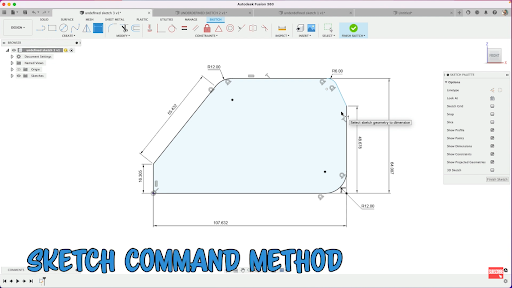
Fusion 360 problems (3 Tools you must know)
Mar 16, 2022Though Fusion 360 is a user-friendly software, there are still users who encountered problems when using this software. Some of the problems that were encountered are sketches that won’t extrude and won’t be fully constrained and how to fully define the sketch.
With this, I want to share 3 tips to help solve your problem and fully maximize the use of this in Fusion 360.

Line Command Technique
- A tool that helps locate problematic areas of the sketch.

Drag it Method
- A tool that helps identify what’s not constrained and how to fully define the sketch.

Sketch Command Method
- A tool that helps the user to identify what missing, provided in a list of what is not constrained.
See the video transcript below and check out the video.
Speaker 1 (00:00):
What do you do when you have a sketch that won't extrude or won't fully constrained? Hey, this Tyler Beck with tech and espresso today, I wanna talk about three tools you can use to troubleshoot your sketches.
Speaker 1 (00:15):
So the first thing I wanna talk about is can you extrude it now? This is basically a fully defined sketch. It almost is. It's almost completely done. And we'll talk about that in just a second, but say your sketch looks something more like this, no dimensions, maybe a few constraints. This is still acceptable infusion. And when you're early in your design phase, this is totally fine. Cuz you can drag it and move stuff around the reason that we fully constrain and dimension things is that when I make a change that it's gonna update, but still obey the design content or intent that I have, it's gonna edit. Well, that's the key with adding dimensions and constraints to make everything fully constrained and fully defined. It's fully defined. When you know that there's a little lock and everything's turned black. So this sketch isn't fully defined, but let's go back over to this example.
Speaker 1 (01:14):
Will it extrude if you hit E for extrude or revolve, if it's extruding, that's good. That's a good sign. And the entity itself is shaded when it's not shaded. For example, when I look at this, I hit extrude. Nothing happens. I look for shading. There's no shading, that's a bad sign. So first tool is the line command technique. What I like to do is come in with some sketch lines. You can do one or two, two, and I did two. Now these two areas are shaded, meaning they are good. There's no areas of concern or errors or problems. My problem is somewhere over here. Now, if I drag the line and I could even bring in another one, delete that and maybe sketch a line going across. So it's starting to kind of like narrow in. So it's somewhere in here. This area has the area where the problem is so multiple different techniques you can do.
Speaker 1 (02:18):
You can delete lines and entities. You can zoom in and investigate. When I zoom in, I can see that I did not complete or for some reason these were not made coincident. So if I drag it and make it coincident, now the sketch is fully shaded. That's a great thing. Can delete those lines. So first tool use the line technique to problem areas in your sketch. Number two, the drag method. So this pertains more to when you want to fully define a sketch. So you've added a bunch of dimensions. You've added a bunch of constraints, but yet you don't have the red lock and it's not fully black. Okay? So what's missing. So when I drag at this blue line, I'm gonna delete this dimension, see what's going on here. So when I drag around, okay, it's not actually constrained to this point. So I'll select the two points.
Speaker 1 (03:20):
Sometimes the dragging works. Sometimes it's better to select the two points and choose coincident. Now they're locked in. And if I drag now the distance to the horizontal is missing. So do I want to define that? Sure. Let's set this angle or set this distance of 15 it's fully defined. All right. Let's look at another example. So when I drag this one, it looks like it's moving off to the side. So I can perhaps put in an angle dimension to lock that in, or maybe even a horizontal distance. Let's try putting in an angle
Speaker 1 (04:00):
And there we go. It's now fully defined. The red lock showed up. Terrific. Much better. So what I want to show now is one that pops up kind of often when you add sketch fillets to a sketch, I found that if you sketch something like this, but add the sketch fillets after the faculty, let me show you what that looks like. So we add a, fill it to this corner. It's gonna add that in and add a radius. And that's perfectly okay to do on your sketches if you want to do it here. But I have found sometimes add it, getting this fully defined can be a little bit trickier. Now I wanna introduce there is the drag method, which is my favorite. And when you, when you're not able to drag, sometimes I like to go in and delete and then move things around and figure out like what's missing. So you know, I think if I were to put an angle here That should fully define it much better now, is there a way for fusion to list our out what's not defined and you actually can. And this is shout out to Kevin Kennedy, great job showing that video with the command line. So I wanna introduce that on Mac it's option, command C select all three, and then you can type in your sketch command. The sketch is sketch.show under constrained,
Speaker 1 (05:30):
Hit enter.
Speaker 1 (05:33):
That'll pop up the way you find this on windows. It is control alt plus C for windows. So once you have your command line type in this command and it that I have three points and three curves under constraint that is highlighting what I already knew, which is the problem was somewhere in this area where the blue lines are, where this can be helpful is when someone accidentally sketched a line on top of a line, right? Or you have multiple entities showing up. And if you'd like to rerun the command, press up, it'll pop that command again in your command prompt click. Okay. And it looks like I have, it's showing me additional points. I like that capability that it's showing me kind of that there's a lot of extra stuff going on here. So if I were to come in here and select this little line, delete it. Now it's still the same problem of what is moving and how do I get it fully defined. So I'm gonna come in and add a dimension like we tried earlier at an angle. Hey, so in the comments below, let me know where fusion 360 messes you up as far as sketches constraints, where you bump into errors, where that seems to show up. Love to hear that love, to hear your questions. Thanks for watching. Catch you in the next video.

